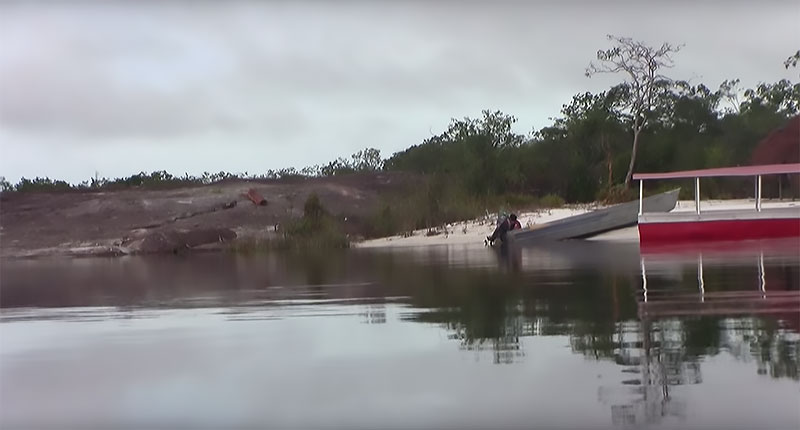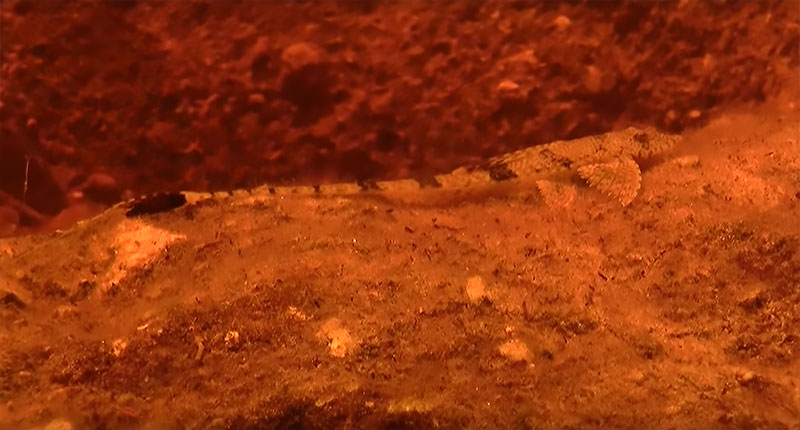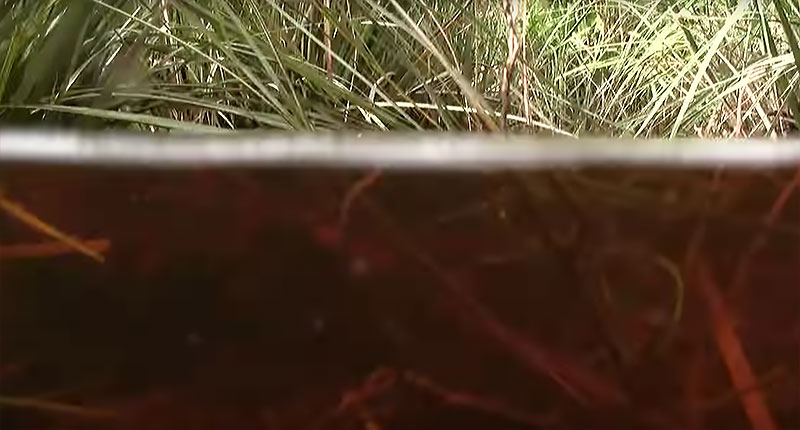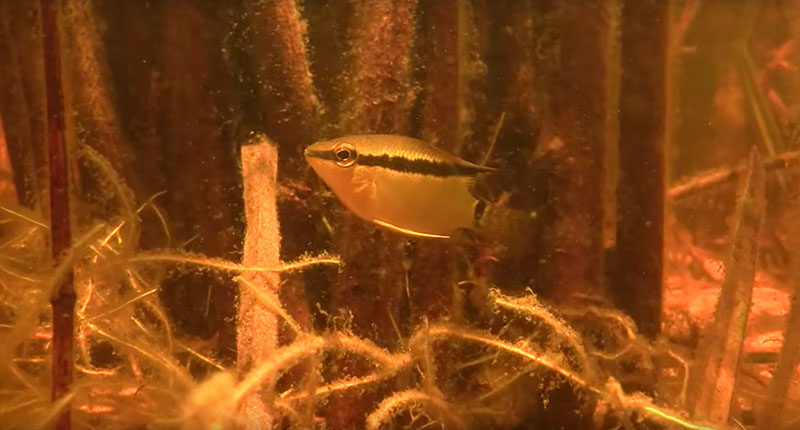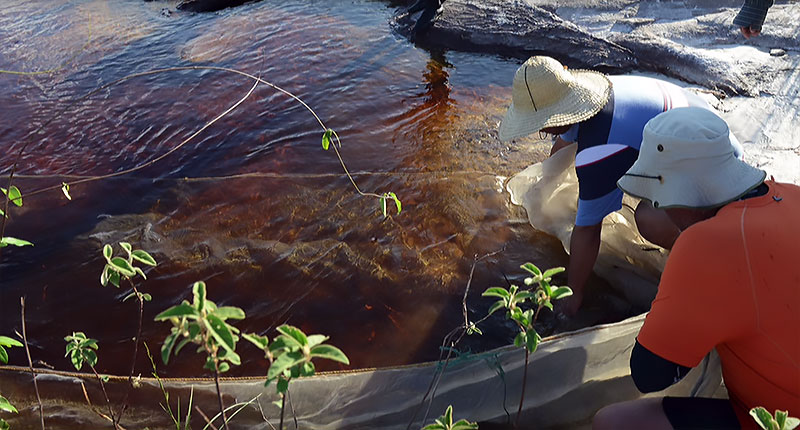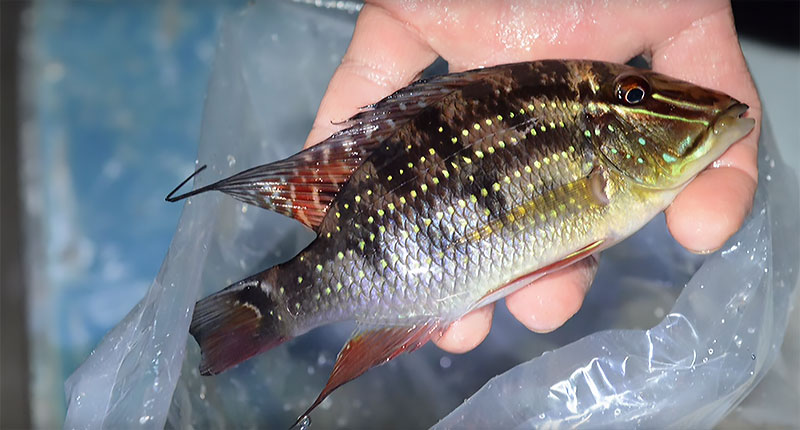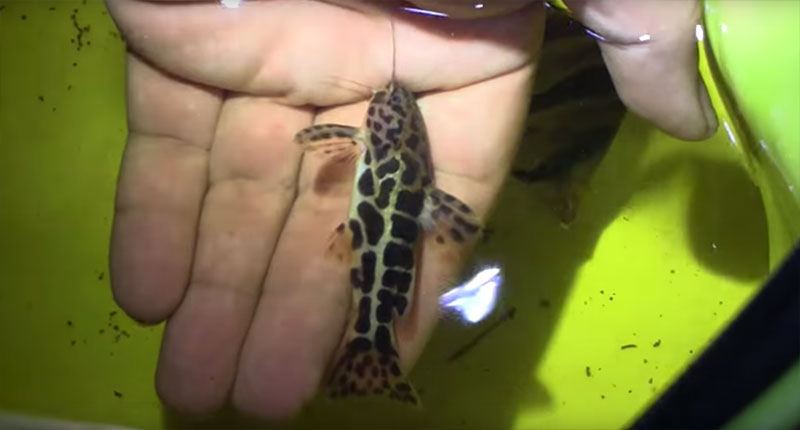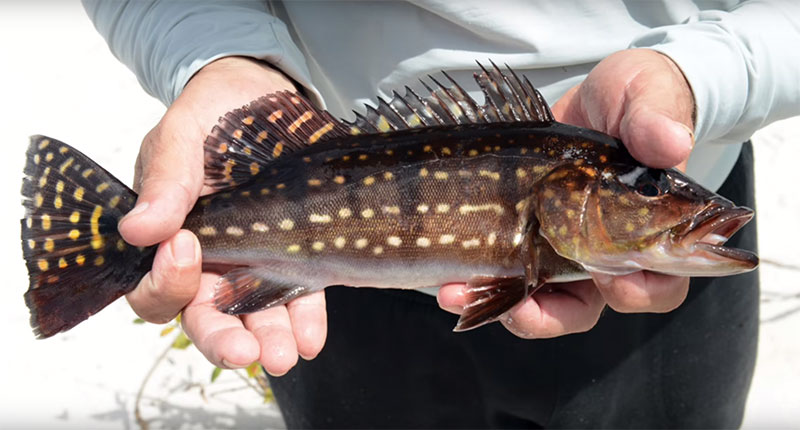
This episode ends with this Cichla temensis caught with a fly rod, but we have to go through a lot of other fish first!
“We started our day on the Rio Atabapo, motoring upstream to explore backwater bays and creeks, but we did not find a lot of fish because of the high water. We headed back to the campsite in the early afternoon, more than a little depressed about not finding fish. Hopefully there will be some fish to see around the beach we are camping on, but we do really not expect much.
“Boy…were we wrong!”
“We had explored the area around the campsite for a little while earlier in the day, so we knew the habitat around the area. The river in front of the beach has a sandy bottom, but the sand gives way to a rocky bottom upstream from the beach. The river water is somewhat clear but stained with blackwater tannin, so visibility is only a few feet. There are a lot of larger schooling fish, mostly Brycon and Hemiodus sp. tetras, but also some Leporinus and cichlids. While we are snorkeling, we discover there are a lot of crevices in the rocky bottom, and those holes and cracks hold fish.”
“Behind and on the downstream side of the beach, there is an area with a lot of flooded brush, grass, and trees. A lot of plant detritus has piled up in these calm waters, and the fish living here are small. Many are juveniles of larger species, but some are nano fish.”
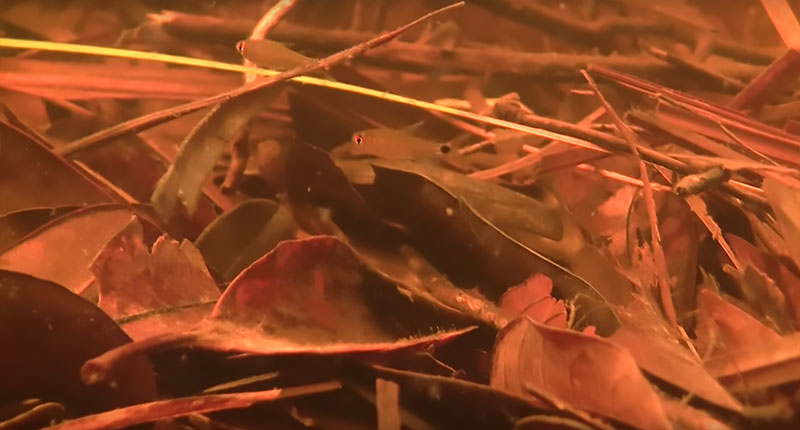
Small fishes like these tetras cavort within the leaf litter and submerged vegetation in the quiet shallows.
“We even see a lot of fish in the open water of the Rio Atabapo, but without a really large seine to capture them against the beach, catching them during the day will be difficult.”
“While we were setting up camp, a fish collector that sells fish to Hernando stopped into meet us and say hello, and he has a large beach seine that we quickly commandeer to see what we can catch in the open water. Big seines take some strategy and skill to use effectively, so we let the pros show us how it is done. Plus, we were already dry. The seine trapped a lot of fish.”
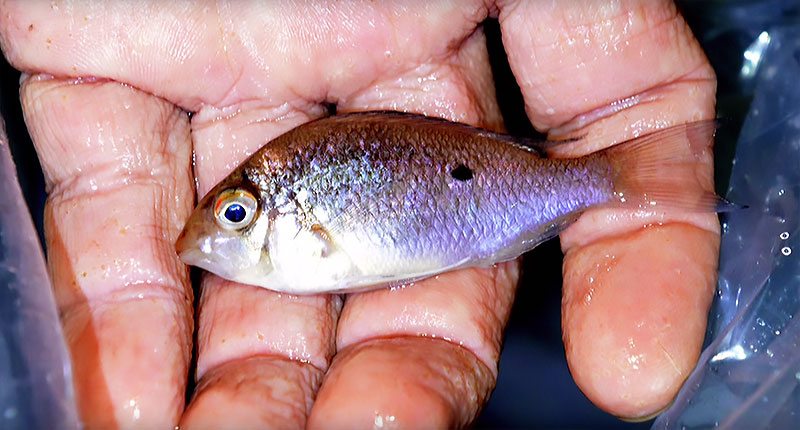
Biotodoma wavrini has shown up repeatedly as the team explores and samples this region of the Rio Atabapo and its tributaries.
“By the time we were finished playing with the beach seine, the sun has started to set, which happens very quickly near the equator. The plan is to go night fishing, but we need to give the fish a few hours to migrate from their daytime haunts to the edge of the river, where they will congregate at night to avoid large predators.”
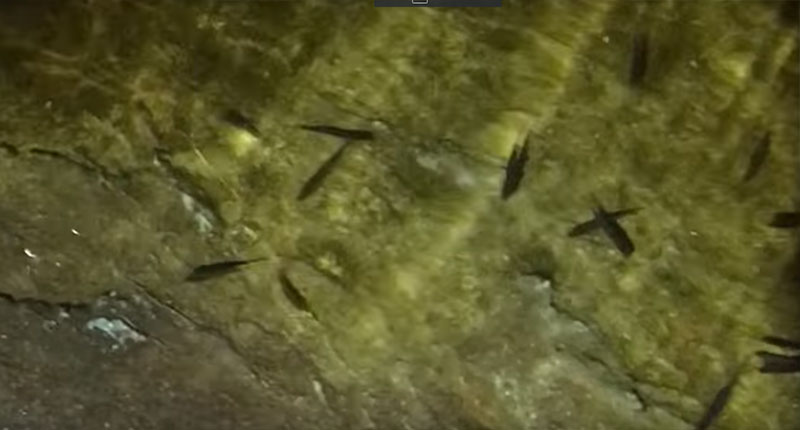
Nightfishing isn’t entirely conducive to photography and video, but that doesn’t stop the team from trying!
“At about 10 PM, we head out with headlamps and hand nets, and as soon as the lights hit the water, we can see there are a lot of fish seeking refuge in the shallows. Unfortunately, photography and video are not easy to do in the dark. We did find some exciting species night fishing, and the first to get us really riled up for more is a Rio Atabapo Altum Angelfish—a beautiful specimen, too. This fish is unexpected because they are more often found in flooded trees this time of year.”
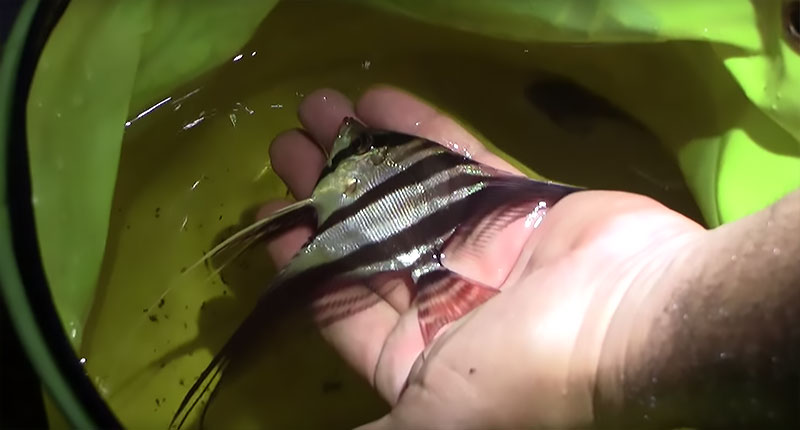
A gorgeous wild Rio Atabapo Altum Angelfish, Pterophyllum altum, gets everyone’s hearts racing. Will they find more?
After finding this angelfish, we had hopes of finding a lot more.
Turning the tides on a rough start to the day, it’s a deluge of fish for the team as they head into the overnight hours. Watch the video to learn the identifications of the stunning fish encountered, including many more we haven’t shown you here!
Watch Other Episodes Here: Ep. 1 | Ep. 2 | Ep. 3 | Ep. 4 | Ep. 5 | Ep. 6 | Ep. 7 | Ep. 8 | Ep. 9 | Ep. 10 | Ep. 11 | Ep. 12 | Ep. 13 | Ep. 14 | Ep. 15 | Ep. 16 | Ep. 17 | Ep. 18 | Ep. 19 | more to come…

